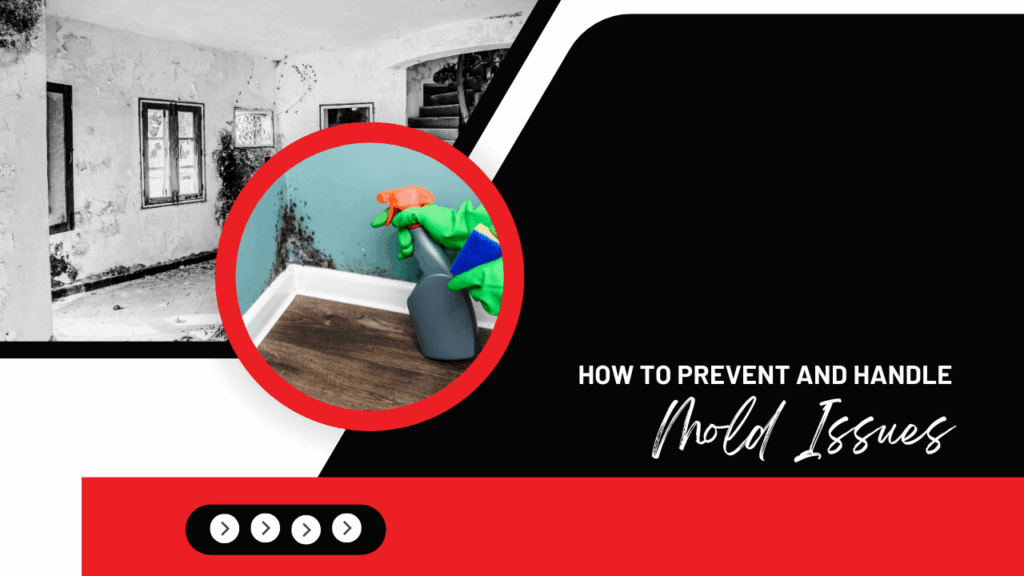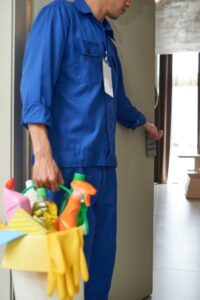
Mold is one of our least favorite conversation topics as property managers in San Gabriel.
We don’t like to hear it. We don’t like to think about it. We definitely don’t like to detect it in a property we manage.
And yet, mold happens.
In the San Gabriel Valley, where warm weather and occasional humidity create the perfect conditions for mold growth, it’s essential for both landlords and tenants to stay proactive. Mold isn’t just an unsightly nuisance; it can also pose serious health risks and lead to costly property damage if left unaddressed.
Whether you’re a landlord protecting your investment or a tenant safeguarding your living space, here’s a practical guide to prevent and manage mold issues in your San Gabriel rental home.
Understand the Causes of Mold
Mold thrives in moist, poorly ventilated environments. In San Gabriel, this can happen due to:
- Leaky roofs or plumbing
- Poor ventilation in bathrooms and kitchens
- Flooding or water damage
- High indoor humidity
Identifying these risk factors early is key to preventing mold before it becomes a problem.
Keep Moisture in Check
Controlling moisture is the most effective way to prevent mold growth. We’re always recommending that owners and tenants use exhaust fans. Run them during and after showers or when cooking. If you’re notified of a leak, fix it promptly. Don’t ignore even small drips. Water damage can escalate quickly.
You’ll also want to monitor humidity. Aim to keep indoor humidity below 60%. A simple hygrometer can help. Encourage tenants not to let wet areas stay wet. Whether it’s a spill or minor flooding, dry it out immediately.
Perform Routine Inspections
Landlords should conduct regular property inspections, especially after heavy rains or if the rental property has a history of water issues. Look for discoloration on walls and ceilings, musty odors, or bubbling paint. These can all signal hidden mold.
Ask tenants to notify you immediately if they spot any signs of water damage or mold. California law requires landlords to provide safe, habitable housing, and addressing mold falls under that responsibility. You don’t want to be the subject of a claim or a complaint.
Respond Quickly to Mold in Your San Gabriel Rental
If mold is discovered, time is of the essence. Small, surface-level mold can sometimes be cleaned with soap and water or a store-bought mold cleaner. However, larger infestations, especially those caused by water damage, require professional remediation.
Landlords should:
- Hire licensed mold remediation professionals for anything beyond a minor spot
- Repair the underlying cause (like a leak)
- Re-inspect the area to ensure the mold is fully gone
- Educate tenants and provide resources
Clear communication can go a long way. Landlords can provide tenants with guidelines on how to prevent mold, including ventilation tips and instructions for reporting issues. Including this information in a welcome packet or lease addendum can help set expectations.
 Mold can be a serious concern in San Gabriel rental properties, but it doesn’t have to take you off the market completely. With regular maintenance, quick response to issues, and open communication between landlords and tenants, mold problems can be prevented or handled swiftly when they arise. A healthy, mold-free home benefits you and your residents.
Mold can be a serious concern in San Gabriel rental properties, but it doesn’t have to take you off the market completely. With regular maintenance, quick response to issues, and open communication between landlords and tenants, mold problems can be prevented or handled swiftly when they arise. A healthy, mold-free home benefits you and your residents.
Let’s talk about how to avoid dealing with this unpleasant situation. Contact us at ZenPro Property Management.
